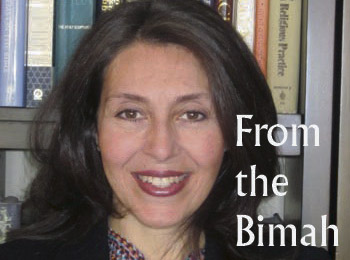Congregants send me links to articles and videos of outrageous bar and bat mitzvah parties. You’ve seen them. The glitter and glam, the celebrity bands, the curvy professional dancers, the bar mitzvah boy jumping out of a cake. Usually when people send me this stuff, they include a note like: “Can you believe this?” or “What’s become of us?” And yet we can’t take our eyes off it. Like a car accident, it’s horrifying and strangely compelling at the same time.
To be honest, over-the-top parties don’t worry me as much as some other trends I see:
• A list, B list: Inviting guests to the party, but not the service. The main event is at the Torah, when bar and bat mitzvahs take their place among the Jewish People. That’s the “Shehechiyanu moment” everyone wants to witness. Parties are great fun, but that moment when everyone huddles around the Torah? Priceless.
• Performance without learning: Take a crash course with a private tutor and anyone can learn to read Torah. But the honour of reading Torah on behalf of the congregation is fully received when there has been regular attachment and learning. Our kids are confident when they’re at home in the synagogue and feel they’re our trusted and treasured representatives on the bimah.
• Destination bar and bat mitzvahs: Some travel to read Torah in an old synagogue in Europe or the Caribbean, or in Israel. These family vacations are terrific and memorable, but they’re private and “over there.” I always encourage families to make a memory here, too, so that the child knows Judaism happens right where you live and that there’s a community right here that needs you and cares about you. Done right, the two ceremonies – here and there – can reinforce one another in important ways.
• DIY bar and bat mitzvahs: Filling a venue with family and friends for a private affair misses the mark when it comes to a bar or bat mitzvah child. The whole purpose is to teach and to show that in Jewish life you don’t “do it yourself.” As a bar or bat mitzvah, you do it with, for and because of the Jewish People. As a bar or bat mitzvah, you never go it alone. Jewish life is highly personal, but not private.
Above all, we need to remember that a bar or bat mitzvah is a person, not an event.
In his book, To Have or To Be, Erich Fromm, the psychologist and social philosopher, challenges us to use verbs of being rather than verbs of having. Rather than say, “I have three children,” we can say, “I am a parent to three children.” Rather than say, “I’m having my bar or bat mitzvah at my synagogue,” we can say, “I am becoming a bar or bat mitzvah. And I will be called to the Torah at my synagogue.” Rather than, “We are having the party at such-and-such a venue,” we can say, “We are celebrating at…” It’s a valuable exercise. Statements of ownership come more easily than statements of being, but statements of being get to the heart of who we are and who we are not.
When one of our bar or bat mitzvahs takes to the bimah, time is suspended for a moment. You can see it on the faces of the parents. They are in another world. Awestruck. It’s a profound moment when past, present and future collide, when the individual and the Jewish People turn to one another and strengthen one another in whole-hearted embrace.
When everyone’s eyes are on the bar or bat mitzvah, I put my eyes on the parents. That rare look on their faces is more than priceless. That’s the gaze of the sacred.
